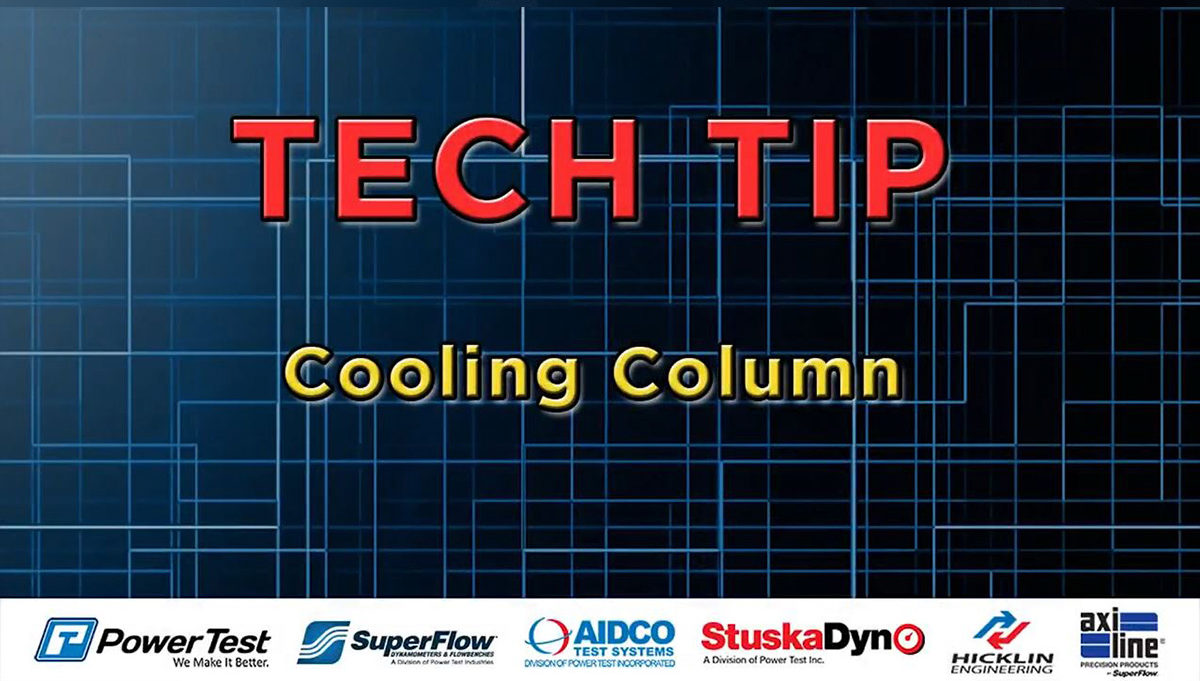Cooling Column Operation
Cooling Columns are a common accessory in many engine dynamometer test cells. Learn about their basic functionality and ease-of-use in this month’s Tech Tip.
Set Up
- Cooling Column Connections
- To set up the cooling column, there are a few quick connections that need to be made.
- First on the engine side, connect the cooling hoses with the appropriate hardwire. If you have any of the optional hose adapters, you would now use the pip thread sealant to connect those to the cooling column. Finish by connecting the hoses from the engines to the appropriate locations on the cooling column.
- Next we need to connect the water supply and column discharge. To do this, we’ll take out cold water supply and connect it to the water supply inlet port. Next we need to connect a hose or other drain connection to the column discharge at the bottom of the column. Close the water exhaust drain valve and we are good to go.
- Includes bleeding air. Also should mention air can be bled same way during operation of cooling column if required
- To set up the cooling column, there are a few quick connections that need to be made.
Operation
- Now that the cooling column is properly set-up we’ll show you how straightforward operation can be.
- Filling Cooling Column
- Turn on your cold water supply ad make sure the water feed pipe is in the open position. Open the air bleed valve near the column discharge and open and bleeds valves or fittings on the engine. Once a steady stream of water begins to flow, you can go ahead and close all of the bleed valves.
- Be aware of the sight glass and gas collector at on top of your column. These will indicate whether your cooling system is filling properly. Excessive gas bubbles or oil in the sight glass indicate a major engine fault, and the equipment should be shut down immediately. Otherwise, any combustion leaks in the cooling system are collected and can be vented through the bleeder valve or discharged with the hot coolant in the riser tube.
- Adjusting Temperature
- The temperature of the coolant should be set to the engine manufacturers recommended operating temperature. When using an engine with a thermostat, the set-point should be below the rated temperature. Using the adjustment knob, you can raise temperature settings by turning the knob counter-clockwise, or lower by turning it clockwise. During normal operation there should be no need to adjust the temperature control valve. You can monitor the return coolant temperature by using the gauge located on the lower half of the cooling column.
- Adjusting Pressure
- The pressure in the cooling column is adjustable. Simply rotate the pressure adjustment wheel and adjust the valve to lower or raise the pressure as so.
- Draining Cooling Column
- Prior to disconnecting the engine from the cooling column, we need to drain all of the liquid. Once the pressure of the system has stabilized, turn off the coolant supply valve by turning the valve to the closed position.
- Open all of the bleed valve and open the exhaust drain valve to completely drain the engine and cooling column.
- At this point, you’re free to disconnect all of the coolant hoses from the engine.
©Copyrighted 2020 Power Test, LLC All rights reserved.


